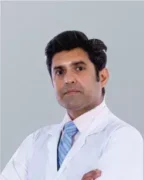A Heart transplant surgery, or a cardiac transplant, is a surgical transplant procedure performed on patients with end-stage heart failure or severe coronary artery disease when other medical or surgical treatments have failed.
What is Heart Transplant?
Heart transplant – A surgery to treat end-stage heart failure. This therapeutic procedure involves replacing a failing heart with a healthy heart from a deceased donor (brain dead).
Alternatively, we can use devices that are fast replacing a human heart transplant and removing the chance of losing life, simply waiting for a cadaver heart to be available. More details about LVAD, below.
When is heart transplant surgery performed?
A heart transplant is the last option and is performed when other treatments have failed. Heart failure is a condition that occurs when the heart can’t pump enough oxygenated blood to meet the needs of the body’s organs.
It is done in cases of severe heart failure which is caused by:
- Dilated cardiomyopathy – A condition where the heart is abnormally thickened, enlarged or stiffened (weakening of heart muscles)
- Severe coronary heart disease – Plaque buildup in the arteries with scarred heart tissue because of a heart attack
- Congenital heart defect – People with birth defects of the heart undergo heart transplant surgery
- Valvular Heart Disease – A condition where there is a defect or damage in one of the four valves of the heart
- Failure of previous heart transplant
In children, heart failure is most often caused by either a congenital heart defect or cardiomyopathy.
Suitability factors for the surgery.
Although heart transplant is an established treatment for end-stage heart failure, it is not suitable for everyone, so every potential heart transplant patient is carefully assessed by a team of heart transplant doctors.
During the assessment, a patient needs to undergo several clinical and psychological tests to determine whether a transplant is the best treatment option or not.
The following are the factors that affect a patient’s eligibility for a heart transplant –
- All the other important organs in the body must be in pretty good shape.
- Transplantation cannot be performed in patients with active infections, cancer, or bad diabetes mellitus.
- A patient who smoke or abuse alcohol are not good candidates for transplant.
- If the patient is not ready to take precautionary measures to ensure you change in their lifestyle so as to keep new heart-healthy.
Once the recipient evaluation is completed and the patient is found medically fit for transplant and ready to opt for it, the legally prescribed form has to be completed and submitted through the hospital to the appropriate authority so as to register the patient’s name on the waiting list for a deceased donor.
After listing, patients need to undergo periodic testing and review with the transplant doctors and must inform them of any significant changes in their medical condition.
How are Organs Matched?
Organs are matched mainly by blood type, but the size is also important. Children usually receive organs from other children and adults usually receive organs from other adults. Organs are not matched by gender, race, or age.
Waiting for an Organ
The waiting begins once the patient is listed as a donor. There are not enough hearts available for everyone who may need a heart transplant. Therefore how long a patient must wait for a heart once on the waiting list is hard to predict. Some people are matched with a suitable heart immediately, while others may wait for over a year.
When patients are waiting for a donor’s heart, sometimes their condition can deteriorate. This can be because the treatment that they are undergoing is unable to support their vital organs. This can cause health complications to arise. In such a case, they might need a device such as the ventricular assist device (LVAD) to be implanted. This helps to keep them stable until they receive a donor heart which can be transplanted in place of their diseased heart. This process is termed as “bridge to transplant”.
LVAD – Left Ventricular Assist Device – don’t wait for an organ
A left ventricular assist device, or LVAD, is a mechanical pump that is implanted inside a person’s chest to help a weakened heart pump blood better.
LVAD doesn’t replace the heart. It just helps it do its job. This can mean the difference between life and death for a person whose heart is unable to pump blood. LVADs are often called a “bridge to transplant.” As they help people who cannot get a heart transplant in time.
LVADs may also be used as ”destination therapy.” This means it is used long-term in some terminally ill people whose condition makes it impossible for them to get a heart transplant can use.
Or for patients who have to wait for long to get a heart transplant may use this. An implant continues to work, there is no hurry to get a transplant.
- Like the heart, the LVAD is a pump. It’s surgically implanted just below the heart. One end is attached to the left ventricle — that’s the chamber of the heart that pumps blood out of the heart and into the body. The other end is attached to the aorta, the body’s main artery..
- Blood flows from the heart into the pump. When sensors indicate that the LVAD is full, the blood in the device is moved into the aorta.
- A tube passes from the device through the skin. This tube, called the driveline, connects the pump to the external controller and power source.
- A computer controller, a power pack, and a reserve power pack remain outside the body. The power pack has to be recharged at night.
An LVAD restores blood flow to a person whose heart has been weakened by heart disease. This helps relieve some symptoms, such as being constantly tired or short of breath.
In rare cases, it lets the heart recover its normal ability by giving it a chance to rest. It maintains or improves other organs, helps with doing exercise, and lets the person go through cardiac rehabilitation















